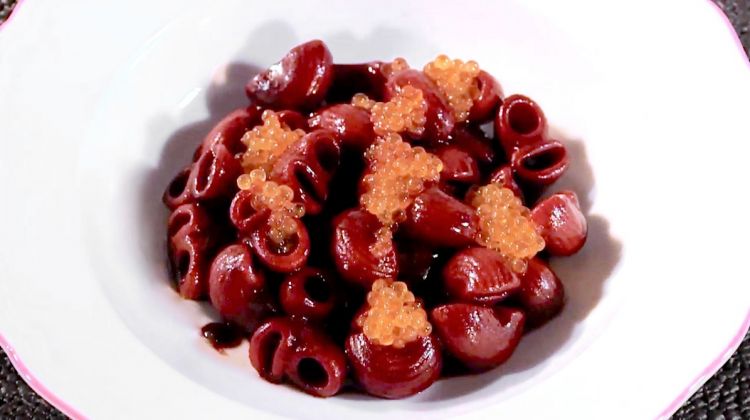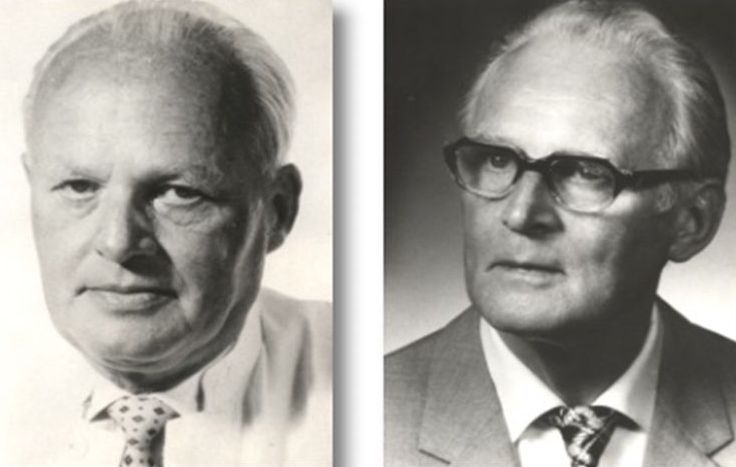I watch the eye of the lake, and it's not a typo. This is how I call the effect that the meeting of two waves creates, when there are ripples in Lake Garda: if looked from the mainland they are simply distant points, an instant flash that disappears immediately, or rather is transformed; a variable that changes constantly, never the same, even though it is founded on the unchanged and majestic lake. It therefore stimulates a different point of view. A view that is capable of changing others and itself.
I've always been a lover of food culture and of food history. To this day they inspire me, and become a part of my dishes. But what if we tried to erase everything, as if we were wiping a blackboard? In that case I believe palate and tongue would regain a sort of virginity; and this, ironically, is what would allow us to research the most egoistic part of taste, the individuality of the palate, so to speak.
There are two elements at play: historic memory, and non-memory. The correlation between the two lies in the distance from memory itself, that is to say the more or less solid anchoring to the past and at the same time the research of a "white taste", that is to say clean, free of any conditioning or habit. My initial hypothesis is: get rid of cultural conditioning, set by well-established academic rules, to discover new notes.

One of the dishes presented by Camanini at Identità on the road
Perhaps it has happened to you too, to experience a "pure" surprise during a culinary trip to distant countries, in front of an incredible dish. This is the reaction to what I call the "white taste", which is such because it is not affected by influences and prejudgments; hence it is totally new, explosive, and even its understanding has different outcomes.
For my masterclass at Identità on the road I had initially thought of presenting seven… identical dishes! An idea influenced by a question I was asking myself a while ago: what if these "identical" dishes (in terms of ingredients, aesthetics. But, surely with different nuances of taste) were served at Lido 84? The answer is simple: the way we now conceive the restaurant experience, this would be an illogic choice, perhaps even mad, and surely against the dogmas of Auguste Escoffier (who bans "répétitions de garnitures, sauf pourtant en ce qui concerne les champignons et les truffes" in his Le livre des menus, 1912, p. 8: not allowing repetitions, in the design of a menu, except for mushrooms and truffles). So it would be far from our rules, both in terms of aesthetics and taste. My guests would not be able to understand the underlying idea.
Yet the stimuli to research these aspects (memory free of cultural conditioning, which implies the overcoming of some points of reference that are considered untouchable) is always there. I know how it originated.

Procaine, the first synthetic local anaesthetic, was produced in 1905 and commercialised under the name of Novocaine. Twenty years later, surgeon Ferdinand Huneke (1891-1966), in the photo he's the one on the left, made a mistake that is now considered to mark the birth of neural therapy. He mistakenly injected in the veins of his sister, who suffered from recurrent migraines, a medicine based on procaine, instead of injecting it in her muscles. Surprisingly, her pain vanished immediately, the first example of therapeutic anaesthesia as a curative method. In 1940 Ferdinand Huneke also discovered the “phenomenon of instant recovery”, immediately freeing his patient from the chronic pain in her shoulders that was troubling her with an injection of procaine under an old scar on the woman's leg. Ferdinand Huneke and his brother Walter (in the photo, he's the one on the right) concluded that illnesses could be caused and increased by so called perturbation camps, which they believed were mostly located in the paranasal sinuses, in the tonsils, in the maxilla-dental area and in the scars
Months ago, I had a chat with a doctor about neural medicine. I was very fascinated by an anecdote: the doctor told me how, by applying this therapy to cells, by giving an anaesthetic, lidocaine, there was a sort of memory loss in the cells. In other words, this anaesthetic creates a short circuit between brain and suffering cell. Why so? He said that most of the times the cell is not inflamed and it only hurts because it still affected by some disfunction, but also because the brain unnecessarily continues to send the same input, let's call it "pain". And this input is once again recognised in that it is already known. Therefore, interrupting this process through the anaesthetic halts the pain, simply because it erases the cells' memory. Again, it's the gesture of wiping a blackboard.
Neural therapy is in other words a therapeutic procedure which, through the injection of targeted and localised anaesthetics, softens or erases acute or chronic pain. In practice, from what I understood or wanted to understand, these therapies can act on a sort of cellular memory.
We all act like virology experts, these days. But we're not. And I'm surely not an expert of neural medicine, which is a complex, widely debated subject. Therefore, I'll stop here. Yet these thoughts inspired me a purely gastronomic thought.
I asked myself, with amused curiosity: what would happen if this kind of therapy was applied to taste memories? For instance: if one were to completely lose this memory, how would we react to the exercise of repeating a dish, let's say made with cabbage, with different taste notes, but with the same aesthetics?
These topics fascinate me. I only started to study them recently, and the first outcome is this very masterclass at Identità on the road. In the end, in the seven dishes I presented, I applied the principles I've explained only to the overall aesthetics, not to the taste. I then played with this imaginary possibility of losing my memory, starting from some ingredients, creating a monotony to better understand the different reactions in terms of flavours. Enjoy (click here).
CLICK HERE AND REGISTER IN IDENTITÀ ON THE ROAD. For info write to iscrizioni@identitagolose.it or call +39 02 48011841 ext. 2215